BNEF’s New Energy Outlook
- BloombergNEF's annual NEO is based on expertise of more than 65 experts in twelve countries. The tech and market specialists share their view on power sector trends.
NEO 2019 forecasts
1. By 2050, nearly half of the global power will be supplied by renewables (50/50 solar and wind).
Global power generation mix
(Source: BloombergNEF)
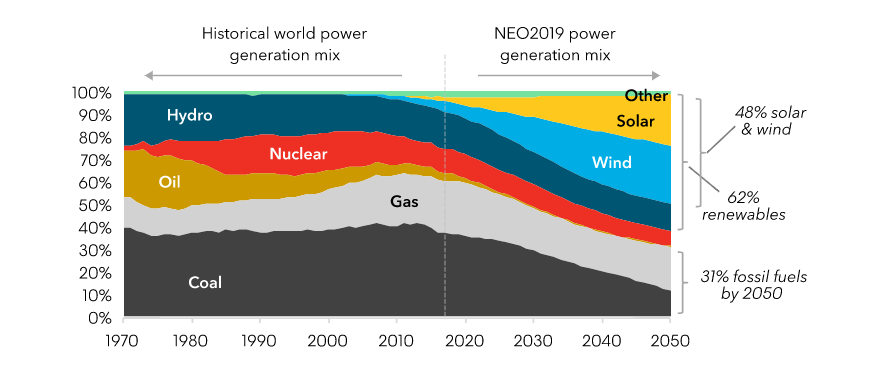
2. Around 13.3 tn USD over the coming 30 years are required to achieve the planned 12-terawatt generation capacity expansion. About 77 percent of the investment is meant for renewable energy.
Cumulative investments in new capacity by country/region ($bn, real 2018)
(Source: BloombergNEF)
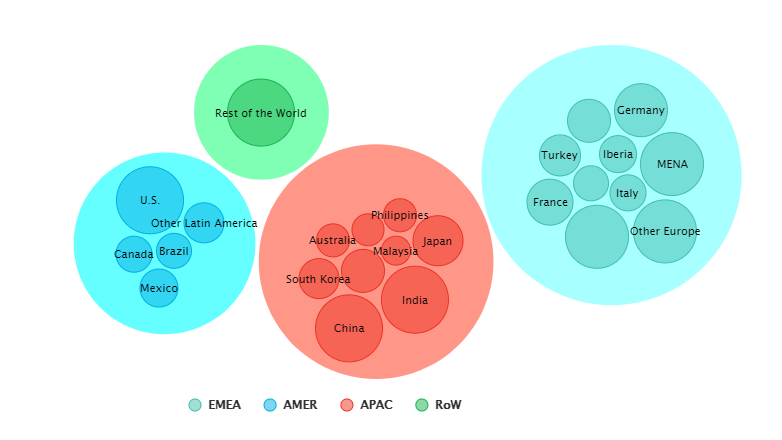
3. Europe will remain a decarbonization leader, while USA and China will strive to catch up.
Solar and wind penetration in the energy mix
(Source: BloombergNEF)
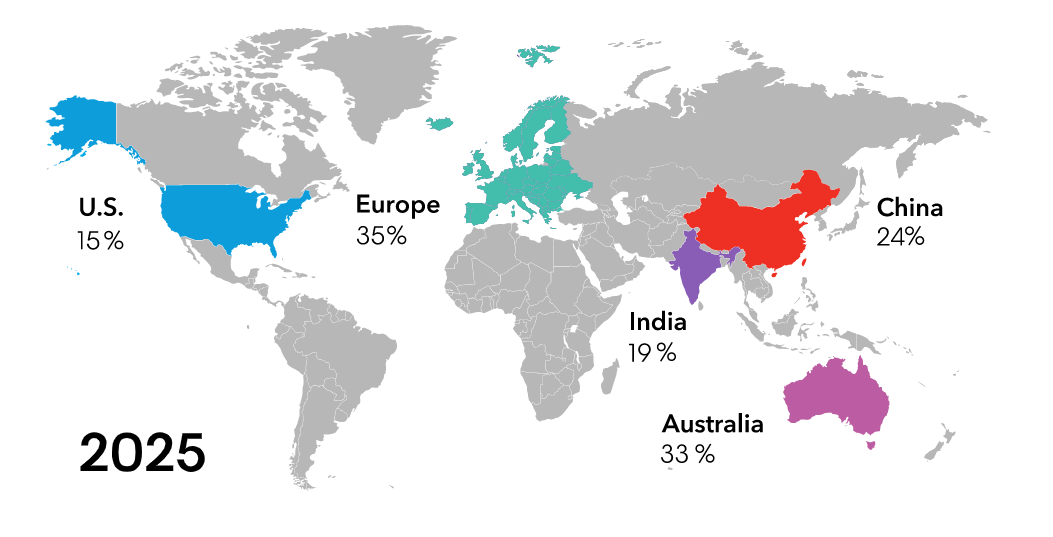
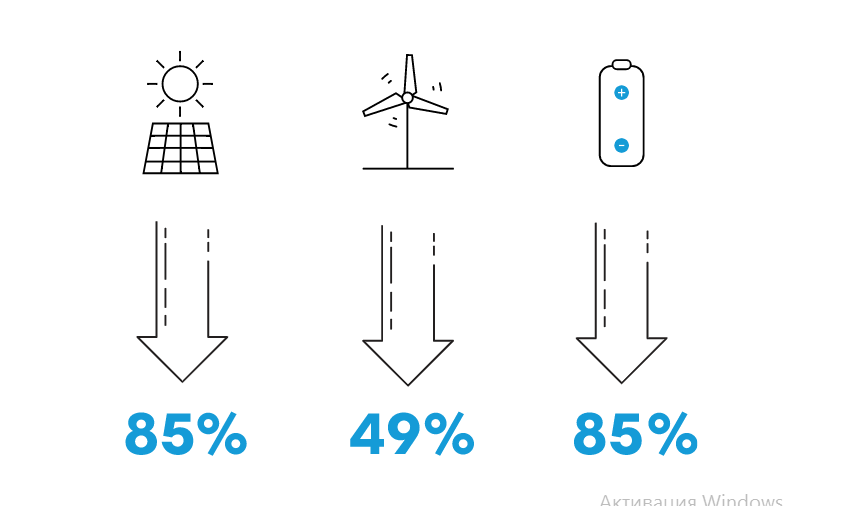
5. Such consumers’ energy choices as behind the meter energy storage and rooftop PV systems are predicted to assist in developing a much decentralised power grid across the globe.
Scale of European generation, 2019 to 2050
(Source: BloombergNEF)
6. Battery storage, gas peaking power plants as well as dynamic electricity demand will help renewables penetrate over 80 percent of a number of markets.
Iberia intraday generation mix, summertime, 2019 to 2050 (GW)
(Source: BloombergNEF)

7. The only continent where coal-fired power will continue developing is Asia. Global collapse of coal power is predicted for 2026.
Electricity generation by region (TWh)
(Source: BloombergNEF)
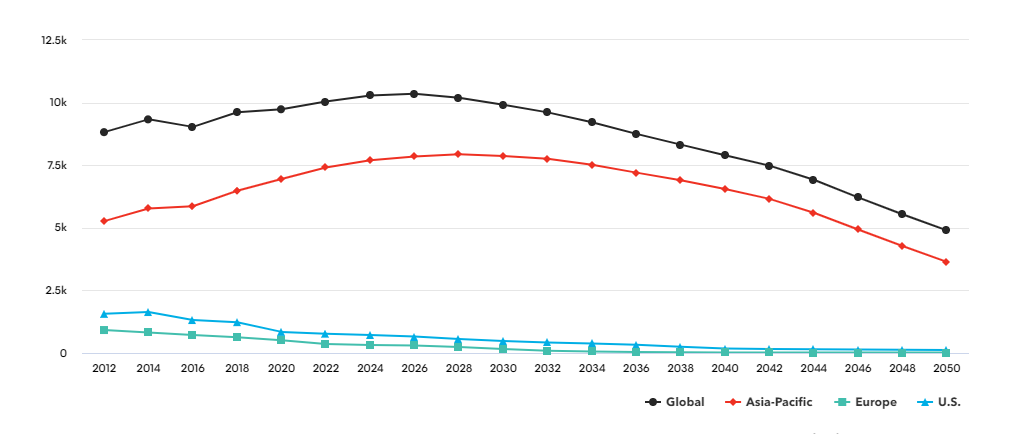
8. Gas power will be growing only 0.6 percent annually over the next thirty years. It will be mostly used to supply backup and flexibility of the systems.
Installed capacity (GW)
(Source: BloombergNEF)

9. Using electricity to power vehicles and heating will help reduce carbon emission.
Heat & transport electrification scenario
(Source: BloombergNEF)

10. To keep an electric power industry on a track, new dispatchable carbonless technologies have to be deployed.
Global electricity generation under 2 degrees assuming electrification of heat & transport
(TWh)
(Source: BloombergNEF)
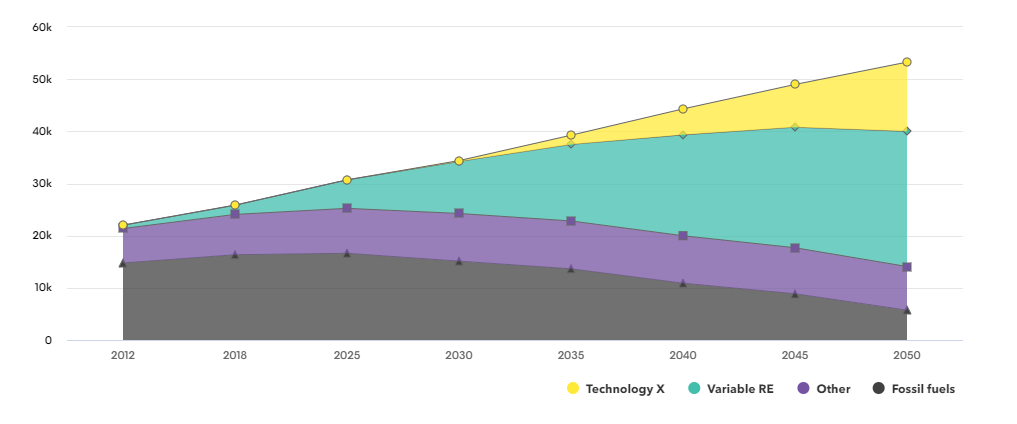
Download report: https://about.bnef.com/new-energy-outlook/
Also read

